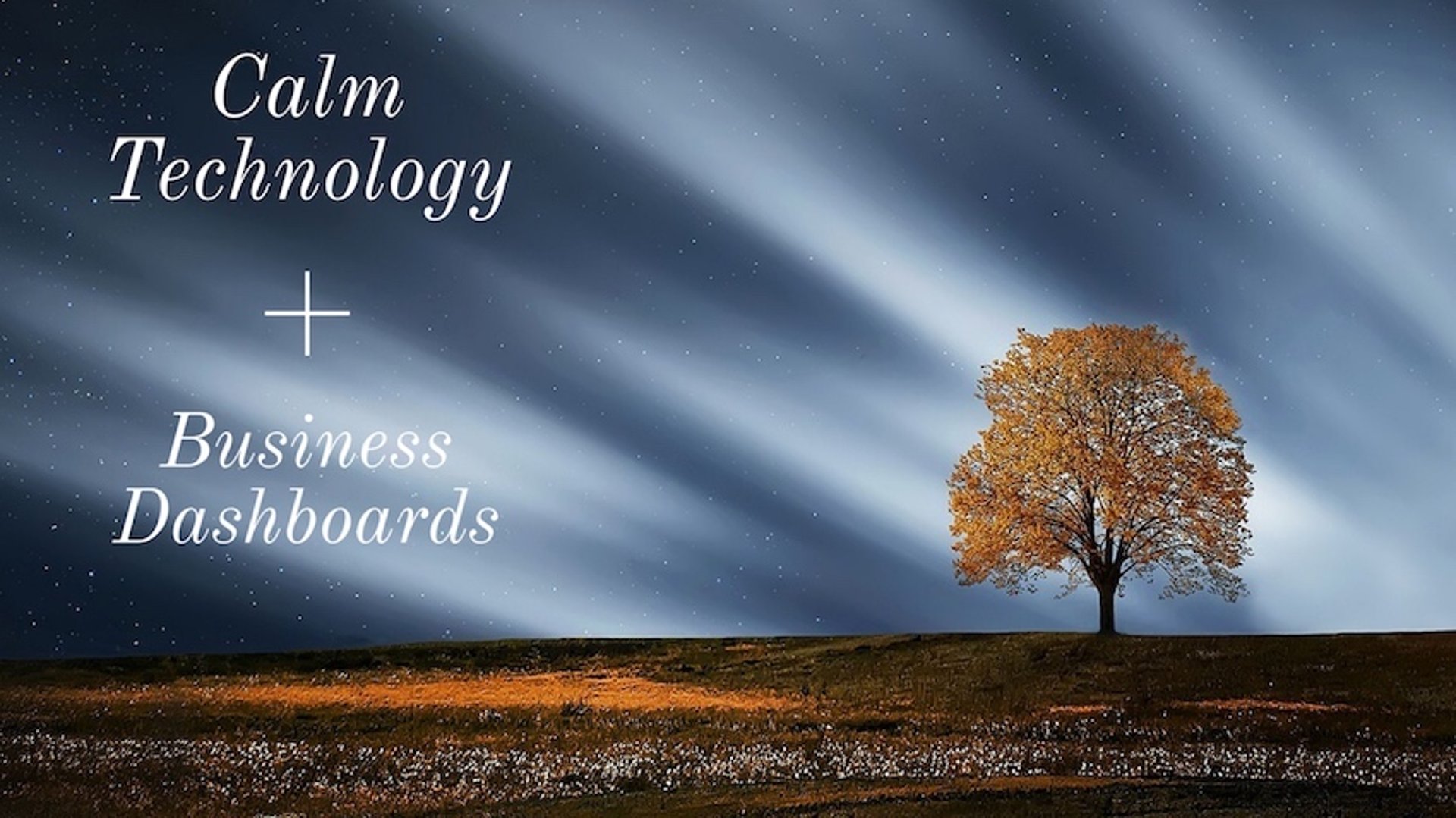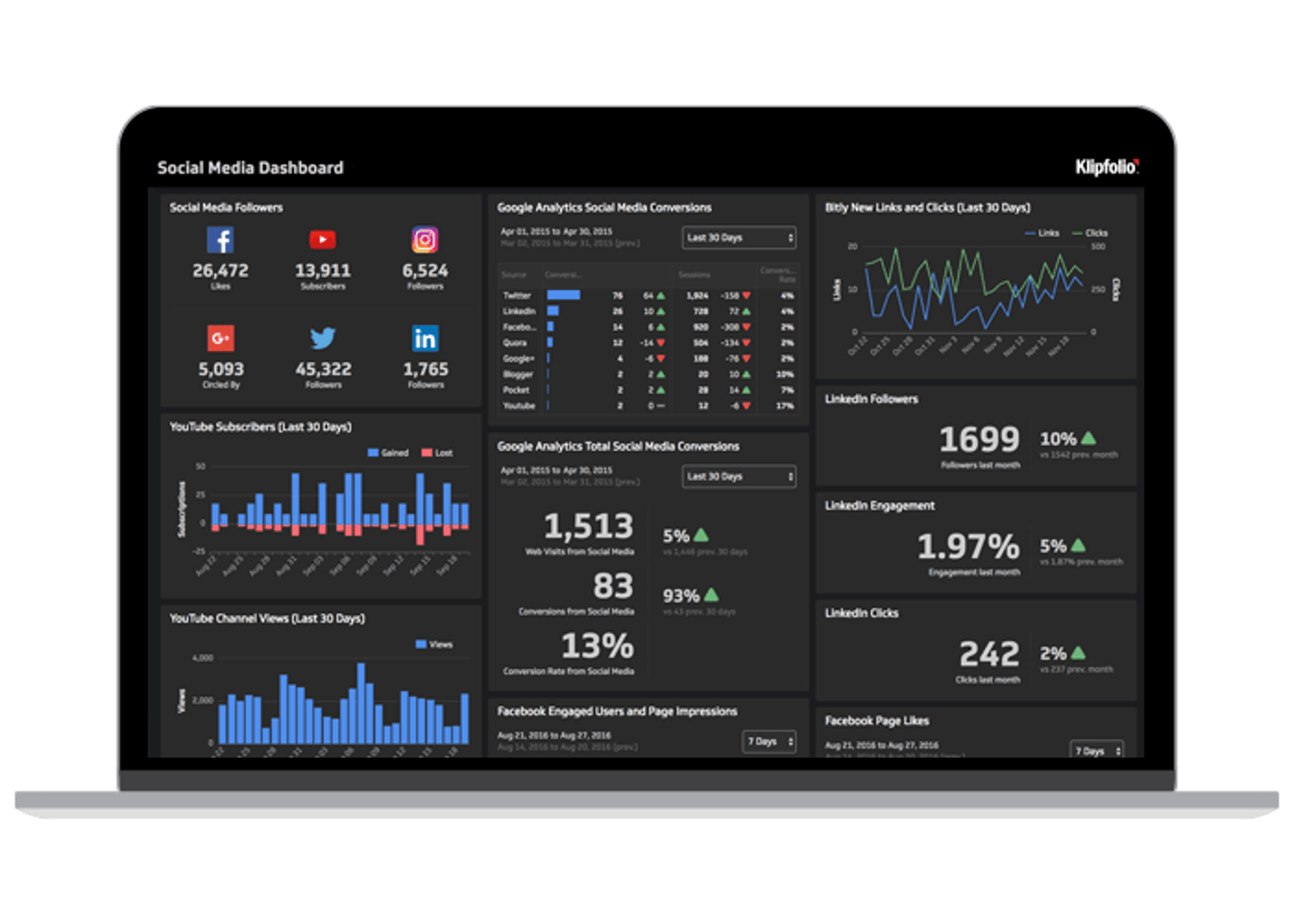On calm technology and business dashboards

Published 2023-03-21
Summary - The importance of calm technology simply cannot be understated. And most modern business dashboards are serving as a rather unheralded example of calm technology.
Of the many speakers at this year's TNW Conference 2017 in Amsterdam, I was inspired the most by Amber Case.
A fellow at The Berkman Klein Center for Internet & Society at Harvard University, Case studies the impact of technology on how we live—and she pays particular attention to aspects of focus and productivity.
She spoke about "calm technology," a term I hadn't heard before but to which I immediately felt an attraction.
Calm technology isn't about some meditation app or sleep app, although it could be. According to Case, it's any technology that empowers our periphery without disrupting our attention span.
In other words, it's when technology serves our needs rather than interrupts the pursuit of our needs.
For example, a "smart refrigerator" that beeps and blinks to alert you of things you don't need to know about (or could have otherwise known in a far easier way) is not calm technology.
Leave it to the wisdom of dogs to find a better use for such a fridge:

Here's a deck that Case presented at Inbound 2015. I think it does an excellent job of explaining calm technology—including where the concept first came from and where Case hopes it will go:
Since the event, I've been taking a more critical view of the technology around me. I've been asking questions about what value it serves me, how it respects (or doesn't) my ability to focus on what matters most.
As a result, I've turned off every notification on my phone. I routinely log out of Slack for hours at a time (sorry, team, I promise it's for your benefit!) and I'm now using Gmail filters and services such as unroll.me so the emails that engage my attention are organized and are actually deserving of my attention.
And all of this, of course, has led me to think about:
Calm technology and business dashboards
I've attended several conferences as part of the Klipfolio team, and I've watched as other attendees (especially those at Social Media Marketing World) walked over to our booth in awe as they caught a glimpse of our dashboards.

Aesthetics lured them in and the practicality ("You mean I can see all of my most important social media KPIs on a single dashboard!?) made them want our product.
But as an actual user of our dashboards, I've grown to love in equal measure how I can view them when I need to and how they get out of my way when I don't need them.
Yes, most business dashboards out there update in real-time. But this doesn't mean they should ping and blink and otherwise steal your focus—unless that is what you want/need them to do.
As Case put it:
"Technology shouldn't require all of our attention, just some of it, and only when necessary."
As a marketer, I know well how particular metrics can capture, hold, and ultimately render worthless the finite resource of focus.
I'm guilty of staring into Google Analytics' Real-Time Overview to watch how many readers are on site—even though I know there are more important metrics I should be focusing on.
Still, dashboards, in my experience, are a shining example of calm technology. Most of them are helping business leaders in all sectors understand the health and performance of their company without disrupting work days with meaningless notifications.
See Also:
How focusing obsessively on a single issue paid off for us
Calm Technology: Principles and Patterns for Non-Intrusive Design
Related Articles

Klipfolio Partner How-To #1: Duplicating dashboards across client accounts
By Stef Reid — November 27th, 2025
The Starter Guide to Dashboard Design
By Emily Hayward — September 24th, 2025
What is a data dashboard?
By Emily Hayward — August 18th, 2025

